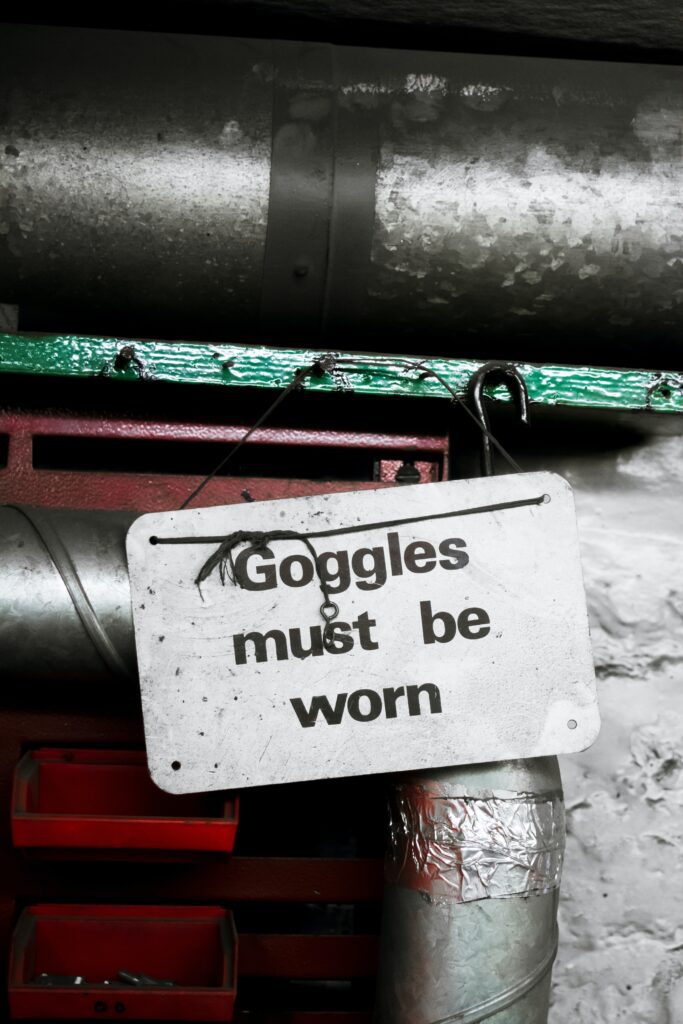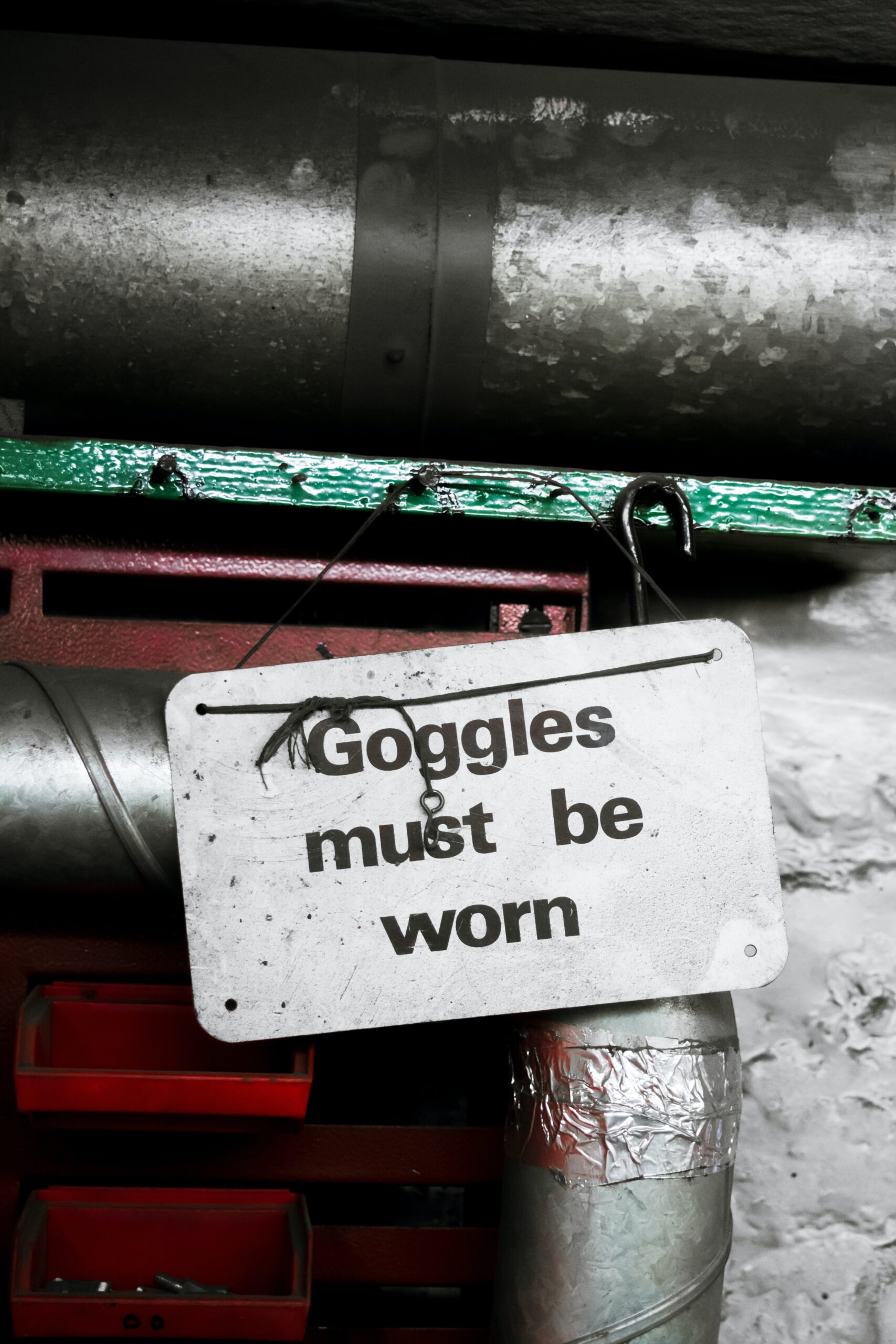In the realm of industrial workshops, identifying potential hazards and assessing associated risks is of paramount importance. This article delves into the significance of conducting a thorough hazard analysis within an industrial workshop setting, with a specific focus on the process of identifying risks. By employing a systematic and analytical approach, workshop managers can effectively mitigate potential dangers, enhance workplace safety, and ensure the well-being of employees. Through the application of various tools and techniques, this article will explore the step-by-step process of hazard analysis, empowering readers to proactively respond to risks and foster a secure work environment.



This image is property of images.unsplash.com.
Understanding Industrial Workshop Hazards
Industrial workshops are dynamic environments where numerous hazards exist that can potentially harm workers and affect the profitability of the company. Industrial workshop hazards refer to the various risks and dangers that are present in these settings, which have the potential to cause injury, illness, or even fatalities. It is crucial to understand and identify these hazards in order to implement effective preventive measures and ensure the safety and well-being of workers.
Types of Industrial Workshop Hazards
There are several types of hazards that can be found in industrial workshops. These hazards can be classified into five main categories: physical hazards, chemical hazards, biological hazards, ergonomic hazards, and psychosocial hazards.
Physical Hazards
Physical hazards in industrial workshops are associated with the physical characteristics of the work environment. These hazards include slips, trips, and falls; falling objects; moving machinery; electrical hazards; noise; and extreme temperatures. Each of these hazards has the potential to cause serious injuries or even fatalities if proper safety measures are not in place.
Chemical Hazards
Chemical hazards in industrial workshops involve exposure to hazardous substances or chemicals that can cause harm to the workers. These hazardous substances may include toxic chemicals, gases, solvents, and flammable materials. Exposure to these chemicals can result in skin irritation, respiratory issues, chemical burns, and even long-term health effects such as cancer or organ damage.
Biological Hazards
Biological hazards refer to the presence of living organisms or substances derived from them that can cause harm to workers in industrial workshops. These hazards may include exposure to bacteria, viruses, fungi, and other microorganisms. Workers in certain industries, such as healthcare or laboratories, are particularly susceptible to biological hazards.
Ergonomic Hazards
Ergonomic hazards are related to the physical strain and stress placed on workers’ bodies due to the work environment and tasks. Factors such as repetitive movements, poor posture, heavy lifting, and inadequate workstation design can lead to musculoskeletal disorders, including back injuries, carpal tunnel syndrome, and neck and shoulder pain.
Psychosocial Hazards
Psychosocial hazards pertain to the social and psychological factors that can adversely impact the mental and emotional well-being of workers in industrial workshops. These hazards include excessive workloads, lack of support from management or colleagues, workplace violence, and bullying. They can result in stress, anxiety, depression, and decreased job satisfaction among workers.



This image is property of images.unsplash.com.
Hazard Analysis Methods
To effectively manage and mitigate industrial workshop hazards, various hazard analysis methods can be employed. These methods include:
Quantitative Risk Assessment
Quantitative Risk Assessment (QRA) is a systematic method that involves the use of mathematical models and statistical data to determine the probability and severity of hazards. QRA provides a quantitative measure of risk, allowing organizations to prioritize and allocate resources for hazard control measures based on the level of risk.
Qualitative Risk Assessment
Qualitative Risk Assessment (QRA) is a method that relies on expert judgment and subjective analysis to assess and rank hazards. QRA provides a qualitative description of risk levels, enabling organizations to identify potential hazards and determine appropriate control measures.
Job Safety Analysis
Job Safety Analysis (JSA), also known as a Job Hazard Analysis, involves breaking down a specific job or task into individual steps and analyzing the potential hazards associated with each step. JSA helps identify hazards and develop safe work procedures to minimize the risk of accidents or injuries.
Fault Tree Analysis
Fault Tree Analysis (FTA) is a deductive method used to identify and analyze the causes of accidents or failures in a system. FTA starts with the undesired event and traces back the possible series of events and conditions that could lead to the occurrence of the undesired event.
Event Tree Analysis
Event Tree Analysis (ETA) is a method used to analyze the potential consequences of an initiating event or specific hazardous scenario. ETA provides a visual representation of the events that could follow the occurrence of the initiating event, helping organizations understand the potential outcomes and develop appropriate contingency plans.
Importance of Hazard Analysis
Hazard analysis plays a critical role in ensuring a safe and healthy working environment in industrial workshops. By understanding and identifying hazards, organizations can take proactive measures to prevent workplace accidents, reduce workers compensation claims, improve workshop efficiency, and ensure regulatory compliance.
Prevention of Workplace Accidents
Hazard analysis helps organizations identify potential hazards and take appropriate preventive measures to eliminate or minimize the risk of workplace accidents. By identifying and addressing hazards before they result in incidents, organizations can significantly reduce the number and severity of workplace accidents, protecting the well-being of workers and preventing unnecessary injuries or fatalities.
Reducing Workers Compensation Claims
By identifying and addressing hazards, organizations can prevent workplace injuries and illnesses, leading to a decrease in workers compensation claims. This reduction in claims not only benefits the company financially but also improves the overall morale and productivity among workers, as they feel valued and protected in their workplace.
Improving Workshop Efficiency
Hazard analysis enables organizations to identify potential hazards that may hinder workshop efficiency. By implementing appropriate control measures, organizations can ensure that the workflow is not disrupted by accidents or incidents, leading to increased productivity and cost savings.
Ensuring Regulatory Compliance
Industrial workshops are subject to various regulations and standards governing workplace safety and health. Hazard analysis helps organizations identify hazards and assess compliance with these regulations. By addressing identified hazards, organizations ensure regulatory compliance, which allows them to maintain their reputation, avoid penalties, and operate within legal frameworks.



This image is property of images.unsplash.com.
Case Studies: Industrial Workshop Hazards
To illustrate the impact of different hazards in industrial workshops, let us consider five case studies—one for each type of hazard.
Physical Hazards Case Study
In a manufacturing workshop, a worker slipped and fell due to an oil spill on the floor. As a result, the worker suffered a fractured wrist and was unable to work for several weeks. This incident not only caused personal harm but also resulted in decreased productivity and increased costs for the company due to the worker’s absence.
Chemical Hazards Case Study
In a chemical production facility, a worker accidentally spilled a corrosive chemical on their skin due to inadequate personal protective equipment. The worker suffered severe chemical burns and required immediate medical attention. This incident not only caused significant harm to the worker but also highlighted the need for proper safety protocols and equipment to prevent such accidents.
Biological Hazards Case Study
In a healthcare facility, a nurse contracted a viral infection while administering care to a patient with an infectious disease. The nurse’s illness resulted in their absence from work and the potential exposure of other healthcare workers. This case emphasizes the importance of implementing strict infection control measures and providing appropriate training and protective gear to healthcare workers.
Ergonomic Hazards Case Study
In an assembly line manufacturing facility, workers were required to perform repetitive tasks with inadequate ergonomics. Over time, many workers developed musculoskeletal disorders, causing chronic pain and decreased productivity. This case highlights the need for ergonomic interventions, such as proper workstations and regular breaks, to protect workers’ health and well-being.
Psychosocial Hazards Case Study
In a high-stress call center environment, workers experienced excessive workloads and constant pressure to meet targets. This resulted in increased stress levels, employee burnout, and decreased job satisfaction. This case underscores the need for organizations to prioritize employee well-being and implement measures to manage work-related stress effectively.
Role of Safety Management Systems
Safety management systems play a crucial role in effectively managing and mitigating industrial workshop hazards. These systems involve comprehensive processes, policies, and practices that organizations adopt to ensure a safe working environment for their employees.
Components of Safety Management Systems
Safety management systems typically consist of key components such as hazard identification, risk assessment, incident reporting and investigation, employee training, emergency preparedness, and ongoing monitoring and evaluation.
Role in Identifying and Preventing Hazards
Safety management systems provide a framework for hazard identification and analysis, allowing organizations to systematically identify potential hazards and assess their associated risks. This proactive approach helps organizations implement appropriate preventive measures and control strategies to mitigate the identified hazards effectively.
Benefits to the Company
A robust safety management system offers several benefits to the company. By prioritizing safety, organizations can improve employee morale and job satisfaction, reduce absenteeism and turnover rates, enhance productivity and efficiency, and minimize legal and financial risks associated with workplace accidents and non-compliance.
Training and Awareness Programs
Training and awareness programs are vital in ensuring that employees are equipped with the knowledge and skills to effectively identify and control hazards in the industrial workshop environment.
Types of Training Programs
Training programs can include general safety orientation for new employees, job-specific training on hazard identification and control, emergency response training, and regular refresher courses. These training programs should be tailored to the specific hazards present in the industrial workshop and should include practical demonstrations, hands-on exercises, and interactive sessions to enhance knowledge retention.
Importance of Regular Training
Regular training is crucial to keeping employees up to date with the latest safety protocols, equipment, and regulations. By regularly refreshing their knowledge and skills, employees are better prepared to identify hazards and take the necessary preventive measures to maintain a safe working environment.
Role of Awareness Programs in Reducing Risks
Awareness programs go beyond formal training and aim to instill a culture of safety within the organization. These programs can include safety campaigns, toolbox talks, safety observation programs, and safety communication materials. By increasing awareness of potential hazards and promoting a proactive safety mindset among employees, organizations can significantly reduce the risks associated with industrial workshop hazards.
Risk Mitigation Strategies
To mitigate the risks associated with industrial workshop hazards, organizations should implement various strategies and control measures.
Safety and Health Policies
Developing and implementing comprehensive safety and health policies is essential for ensuring a safe working environment. These policies should clearly outline the organization’s commitment to safety, responsibilities of employees and management, hazard identification and control procedures, and incident reporting and investigation protocols.
Safety Equipment and Procedures
Proper safety equipment and procedures are crucial in minimizing the risks associated with various hazards. Personal protective equipment (PPE) such as gloves, goggles, helmets, and respirators should be provided to employees based on the identified hazards. Additionally, organizations should establish standard operating procedures (SOPs) for safe work practices, including machine guarding, lockout/tagout procedures, and safe handling of hazardous substances.
Regular Inspections and Maintenance
Regular inspections and maintenance of equipment and work areas are essential to identify and address potential hazards. Organizations should establish an inspection schedule and ensure that equipment is regularly maintained and serviced to prevent malfunctions or failures that could lead to accidents. Regular housekeeping practices should also be implemented to maintain a clean and organized workspace, reducing the risk of slips, trips, and falls.
Emergency Preparedness and Response
Having an effective emergency preparedness and response plan is critical in minimizing the impact of accidents or incidents. This plan should include evacuation procedures, emergency contact information, first aid training, and regular drills to ensure that employees are prepared to respond appropriately in case of emergencies. Organizations should also establish communication channels to promptly notify employees of any potential hazards or emergencies.
Regulations and Compliance
Industrial workshops need to adhere to various regulatory standards and guidelines to ensure the safety and well-being of their workers. Some of the key regulations and compliance requirements include:
Occupational Safety and Health Administration Standards
The Occupational Safety and Health Administration (OSHA) sets and enforces workplace safety and health regulations in the United States. Industrial workshops need to comply with OSHA standards, which cover a wide range of safety and health topics, including hazard communication, machine guarding, electrical safety, and personal protective equipment.
Local and State Regulations
In addition to federal regulations, industrial workshops are also subject to local and state regulations. These regulations may include specific requirements for industries such as construction, manufacturing, or healthcare. Adhering to these regulations is crucial to ensure compliance and prevent legal consequences.
Industry-Specific Standards
Certain industries have their specific standards and guidelines governing workplace safety and health. For example, the construction industry follows the standards set by the Occupational Safety and Health Administration Construction (OSHA Construction) to address the unique hazards and risks associated with construction sites. Industrial workshops should be familiar with industry-specific standards and ensure compliance with them.
Future of Industrial Safety
As technology continues to advance and industries evolve, the future of industrial safety holds both opportunities and challenges. Understanding the emerging trends and addressing the evolving needs is essential for ensuring a safe and healthy working environment.
Impact of Technology on Safety Measures
Technology has the potential to revolutionize safety measures in industrial workshops. Advancements in artificial intelligence, robotics, wearable technology, and sensor networks can enhance hazard detection, automate safety procedures, and provide real-time monitoring of workers’ well-being. These technological advancements have the potential to improve efficiency, reduce risks, and enhance overall safety in industrial workshops.
Trends in Industrial Safety
Several trends are shaping the future of industrial safety. These trends include a greater focus on proactive safety measures, increased use of data analytics for hazard identification and risk management, adoption of automation and robotics for hazardous tasks, integration of safety management systems with organizational processes, and a shift towards a culture of safety throughout the organization.
Challenges and Opportunities in the Future
While the future of industrial safety presents numerous opportunities for improvement, there are also challenges to overcome. Embracing technological advancements may require significant investments and training programs. Additionally, addressing emerging risks associated with new technologies and industries, such as nanotechnology or renewable energy, will require ongoing research and proactive measures.
In conclusion, understanding and effectively managing industrial workshop hazards is essential for ensuring the safety and well-being of workers and improving company profitability. By identifying and analyzing hazards, implementing control measures, and complying with relevant regulations, organizations can create a safe working environment that minimizes the risk of accidents, reduces workers compensation claims, and enhances overall efficiency. Furthermore, investing in comprehensive safety management systems, training programs, and proactive risk mitigation strategies will enable organizations to adapt to future challenges and embrace emerging trends in industrial safety.
